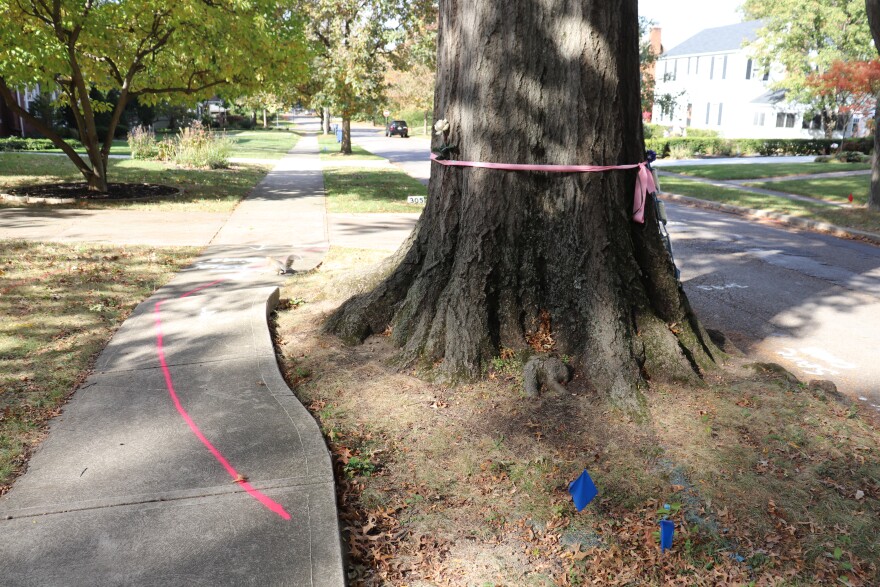In Clintonville, a 100-year-old pin oak tree towers in front of Maureen Keyhani’s home on Arden Road. The tree sits in what is called a curb lawn between the sidewalk and the curb, and its knotted roots extend to the street.
Keyhani and her neighbors love the tree, so it was a surprise when Keyhani received a notice that the city of Columbus wanted to cut it down.
“The city was proposing that they would pay to take the tree down, and they would redo the sidewalk in its existing location,” says Keyhani. “Then the plan was also to pulverize the asphalt in the street down several inches and redo the roadway."
Keyhani’s street has been undergoing a major renovation. That's one reason why the city proposed paying for sidewalk repairs, which isn’t usually the case. They eventually came to a compromise that spared the tree.
“I’ve given the city permission to put the sidewalk on my property,” Keyhani says. “So, they’re going to do that and they are going to pay for that, or at least that’s my understanding.”
If a tree grows next to your front curb and uproots the sidewalk, who is responsible and who foots the bill? In Central Ohio, that depends on many factors, like where you live, if the tree is damaged and who owns the tree in the first place.

Things did not go so smoothly for Gahanna resident Lori Robison-Embry. She became concerned two years ago when she saw that the tree roots at her front curb had lifted the sidewalk, so she talked to the city arborist.
“He said that as long as the tree isn’t dead or causing a hazard, then it was my responsibility to either have it removed or trimmed,” Robison-Embry says.
Robison-Embry paid $350 to remove her tree and the stump. She says the city told her the sidewalk is also the homeowner’s responsibility.
“I think that the city should be a little more, I think, involved with the sidewalks because it is causing a hazard for, you know, people who walk every day, kids going to school,” Robison-Embry says.
A similar situation is playing out in cities across Central Ohio. Attorney Vic Merullo, who specializes in tree law, says the buck stops at the city.
“The city can shift maintenance requirements to the homeowner and require the homeowner to do maintenance on a tree, but they can’t shift liability,” Merullo says.
That means if someone trips over the sidewalk and suffers an injury, they most likely would sue the city.
Merullo says Gahanna lost a lawsuit involving a driver who missed a stop sign blocked by a tree planted by a homeowner.

In Worthington, Superintendent of Public Service and Engineering, Steve Tennant says the city uses a $90,000 annual budget to maintain trees within the right-of-way.
“If it’s a hazard and we know it’s a hazard, and the homeowner points it out, we will remove that tree,” Tennant says. “If we don’t think the tree is going to last or if the tree is in decline, we will absolutely remove it.”
However, like Gahanna, Worthington residents are responsible for the sidewalks. In Upper Arlington and Dublin, the city will pay to repair sidewalks damaged by the roots of city-owned trees.
Merullo says homeowners should keep vigilant about the status of trees on their property, whether they own them or not.
“Every homeowner has a duty to inspect every tree on their property, to determine if they can see if the tree is a healthy or hazardous tree,” says Merullo. “And of course, if they can’t perform the inspection, they can hire someone to do it.”





